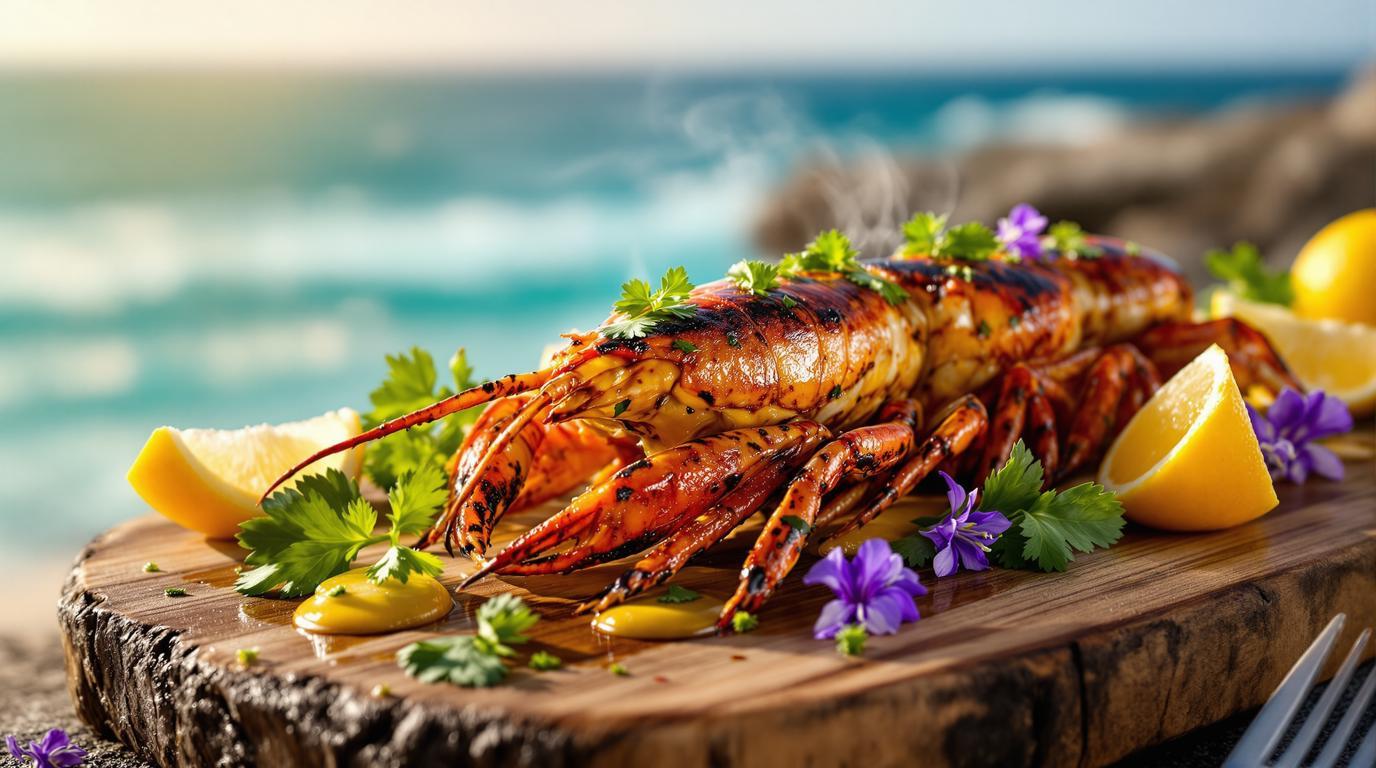The first time I encountered Moreton Bay bugs was during my sabbatical in Queensland, Australia. Standing on a weathered dock at dawn, watching fishermen unload their catch, I was handed what looked like a prehistoric creature—flat, with an armor-like shell. “Best seafood you’ll ever taste,” the fisherman winked. That evening, I prepared them with nothing more than herb butter on a beachside grill. The sweet, delicate meat with its lobster-like richness and firm texture transformed my understanding of simplicity in seafood. Even now, years later, the memory of that first bite—tender meat kissed by flame and herbed butter melting into every crevice—remains my benchmark for seafood perfection.
The Story
Moreton Bay bugs are a quintessential Australian delicacy, named after the Queensland waters where they’re harvested. Despite their intimidating name and armor-like appearance, these crustaceans (technically slipper lobsters) are beloved for their sweet, delicate meat that rivals lobster in richness while maintaining its own distinct character. The traditional preparation—splitting and grilling with herb butter—emerged from coastal communities where simplicity preserved the natural flavors of just-caught seafood. While modern chefs might dress them with extravagant sauces, this classic preparation remains the gold standard for experiencing their true essence.
Ingredients Spotlight
• 4 fresh Moreton Bay bugs (about 7 oz/200g each), split lengthwise
• 7 tablespoons (3.5 oz/100g) unsalted butter, softened
• 1 garlic clove, finely crushed (not minced)
• 1 tablespoon fresh parsley, finely chopped
• 1 teaspoon fresh thyme leaves
• 1 tablespoon fresh oregano, chopped
• 1 tablespoon extra virgin olive oil
• Sea salt and freshly cracked black pepper
• Lemon wedges, for serving
Chef’s Note: The quality of butter makes a significant difference here. I use cultured butter with 82% fat content for a more complex flavor. If you can’t find Moreton Bay bugs, langoustines or small lobster tails make reasonable substitutes, though you’ll need to adjust cooking times slightly.
Step-by-Step Guide
1. Prepare the bugs: Using kitchen scissors, cut each bug lengthwise down the center. Remove the digestive tract (the dark line running down the tail). Lightly brush the flesh with olive oil and season with a pinch of salt and pepper.
2. Make the herb butter: In a small bowl, combine softened butter, crushed garlic, parsley, thyme, and oregano. Mix thoroughly and refrigerate for 5 minutes to slightly firm the mixture while maintaining spreadability.
3. Preheat your grill: Heat your BBQ or grill to medium-high heat (approximately 400°F/200°C). Allow it to preheat for 5-7 minutes to ensure even cooking temperature.
4. Grill the bugs: Place bugs shell-side down on the grill and close the lid. This traps heat and cooks the meat evenly while protecting it from direct flames. Cook for 6 minutes.
5. Finish cooking: Flip the bugs flesh-side down for just 1 minute to get light caramelization and char marks.
6. Apply butter and serve: Remove bugs from heat, immediately brush the warm meat generously with herb butter, and serve with lemon wedges.
Expert Techniques
The “shell-down first” method is critical—it’s the difference between juicy perfection and disappointment. The shell acts as a natural buffer, allowing the delicate meat to cook gently in its own juices. I learned this technique from a third-generation fisherman who explained that cooking flesh-side down first causes the meat to contract too quickly and become tough.
The key milestone to watch for is when the flesh turns from translucent to completely opaque but remains moist—this happens around the 6-minute mark for medium-sized bugs. If you’re uncertain, insert the tip of a paring knife into the thickest part; it should meet minimal resistance, and the meat should be pearly white throughout.
Presentation & Pairing Ideas
For a stunning presentation, arrange the bugs on a large wooden board with the herb butter melting visibly into the flesh. Scatter fresh herbs, lemon wedges, and perhaps some edible flowers for color. I serve these with a chilled Sauvignon Blanc that has enough acidity to cut through the richness while complementing the herbal notes in the butter.
For a complete meal, pair with a silky cloud-like potato purée or a fresh fennel and citrus salad. If you’re feeling adventurous, follow with a Moroccan orange almond cake that echoes the citrus notes in your meal.
The beauty of this dish lies in its balance—the sweetness of the bug meat against the savory herbs, the richness of butter brightened by fresh lemon. Make this your own by experimenting with your herb blend; I’ve had stunning results adding a hint of lemongrass or a touch of finely diced preserved lemon to the butter for a subtle twist on tradition. Remember, cooking is about moments of delight—and this dish delivers them in abundance. 🦞✨
